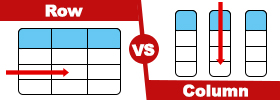Difference between Tactics and Strategy
Key Difference: The main difference between the two words is that strategy has a bigger scope. It focuses on the end goal. Its main objective is to try to achieve the end point. Tactics, on the other hand, have a smaller scope. They focus on trying to reach from task to task; their main objective to finish the immediate goal, rather than the end goal.
 Tactics and Strategy are two words that are now commonly heard. They were once military terms, but are now commonly applied in business, sports, and even games. While the two terms are interrelated, they are by no means the same. They infer two completely different things.
Tactics and Strategy are two words that are now commonly heard. They were once military terms, but are now commonly applied in business, sports, and even games. While the two terms are interrelated, they are by no means the same. They infer two completely different things.
At their core, both the words mean a way to achieve something. They are a process, a technique. However, the main difference between the two words is that strategy has a bigger scope. It focuses on the end goal. Its main objective is to try to achieve the end point.
Tactics, on the other hand, have a smaller scope. They focus on trying to reach from task to task; their main objective to finish the immediate goal, rather than the end goal. It can be said that tactics are a smaller set of strategies, or that a strategy is the combination of all the tactics together.
Oxford Dictionaries defines tactics as “an action or strategy carefully planned to achieve a specific end’; whereas, a strategy is defined as ‘a plan of action designed to achieve a long-term or overall aim.’ This again reiterates that the focus of a strategy is broader than for tactics.
 In business, the strategy is a plan to achieve the overall aim or purpose of the company, while tactics would be the ways, the step-by-steps, which would help achieve the strategy. For examples, a company’s strategy for the success of their new product would be to get as much exposure for the product as possible. The tactics utilized to do this would be online advertisement, TV commercials, brand endorsement, discounts and offers, etc.
In business, the strategy is a plan to achieve the overall aim or purpose of the company, while tactics would be the ways, the step-by-steps, which would help achieve the strategy. For examples, a company’s strategy for the success of their new product would be to get as much exposure for the product as possible. The tactics utilized to do this would be online advertisement, TV commercials, brand endorsement, discounts and offers, etc.
However, the tactics and the strategy must work hand in hand; they cannot focus on two different end goals. Imagine that you are stuck on one side of the river. Now you have to go somewhere that is on the other side of the river. So, your strategy is to cross the river. Your tactics would be the stepping stones that you utilize to cross the river. Hence, you can see how the tactics would have to fit into the strategy, in order to reach the end goal. If the tactics and the strategy try to achieve two different things, then neither would be achieved.
Comparison between Tactics and Strategy:
|
|
Tactics |
Strategy |
|
Definition (Oxford Dictionaries) |
An action or strategy carefully planned to achieve a specific end |
A plan of action designed to achieve a long-term or overall aim |
|
Definition (Business Dictionary) |
Means by which a strategy is carried out; planned and ad hoc activities meant to deal with the demands of the moment, and to move from one milestone to other in pursuit of the overall goal(s). In an organization, strategy is decided by the board of directors, and tactics by the department heads for implementation by the junior officers and employees. |
A method or plan chosen to bring about a desired future, such as achievement of a goal or solution to a problem. The art and science of planning and marshalling resources for their most efficient and effective use. The term is derived from the Greek word for generalship or leading an army. |
|
Duration |
Short term |
Long term |
|
Perspective |
Narrow, "close-up" |
Broad, "big picture" |
|
Decided by |
In an organization, tactics are decided by the department heads for implementation by the junior officers and employees. |
In an organization, strategy is decided by the board of directors. |
|
Purpose |
To utilize specific resources to achieve sub-goals that support the defined mission |
To identify clear broader goals that advance the overall organization and organize resources |
|
Resources |
A subset of resources used in a plan or process. Tactics are often specific tactics with limited resources to achieve broader goals. |
All the resources within the organizations, as well as broader market conditions including competitors, customers, and economy. |
|
Accountability |
Held accountable to specific resources assigned |
Held accountable to overall health of organization |
|
Methods |
Uses experiences, best practices, plans, processes, and teams. |
Uses experience, research, analysis, thinking, then communication. |
|
Output |
Produces clear deliverables and outputs using people, tools, time. |
Produces clear organizational goals, plans, maps, guideposts, and key performance measurements. |
Image Courtesy: scienceofstrategy.org, wetwiring.wordpress.com









Add new comment